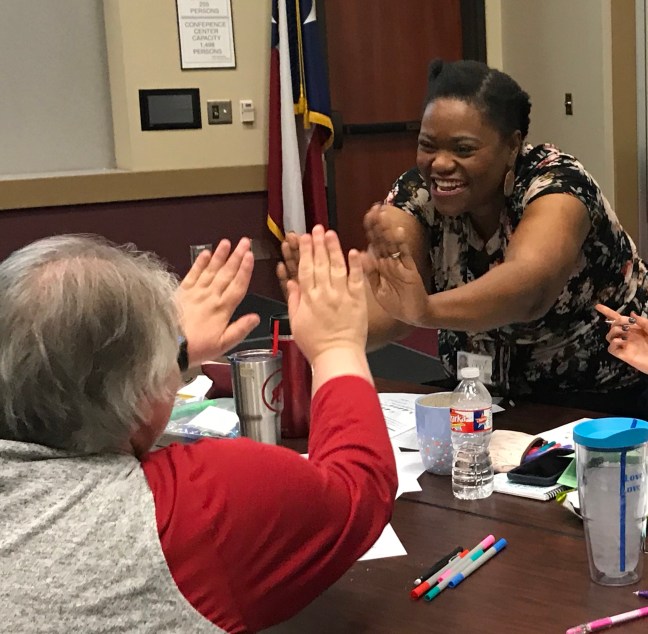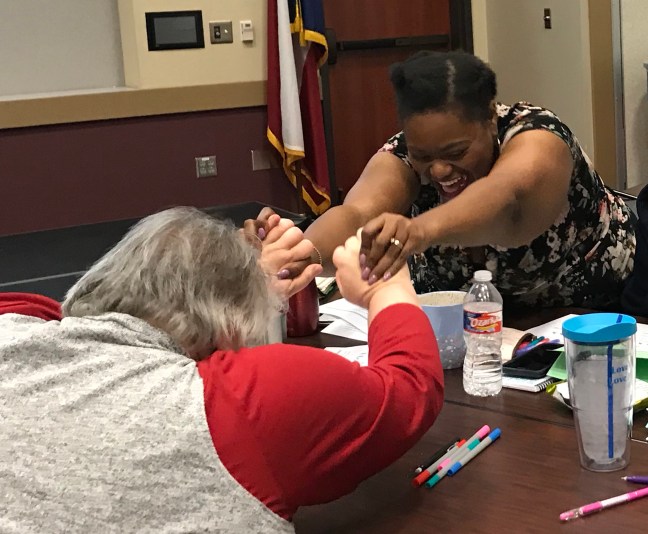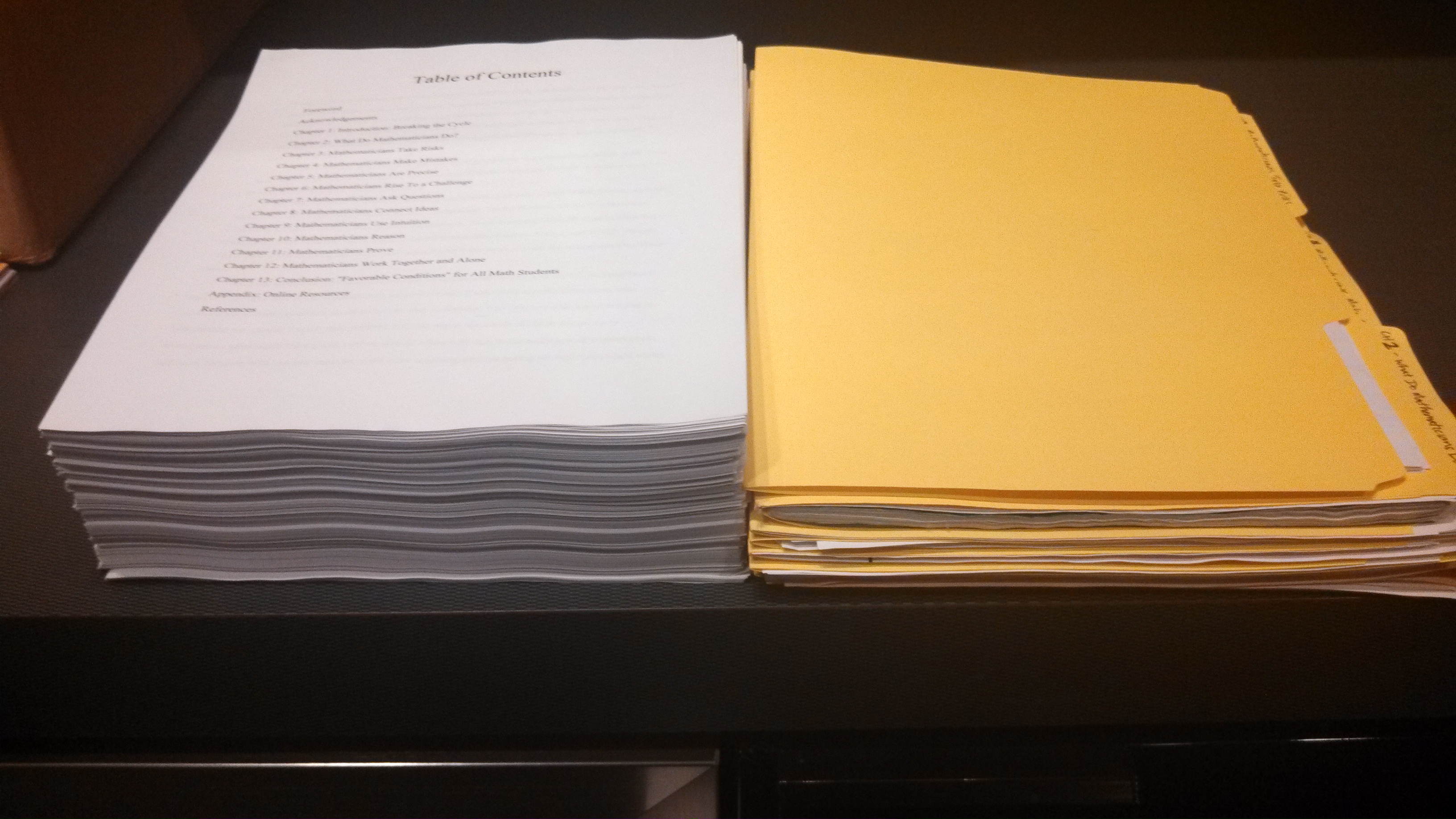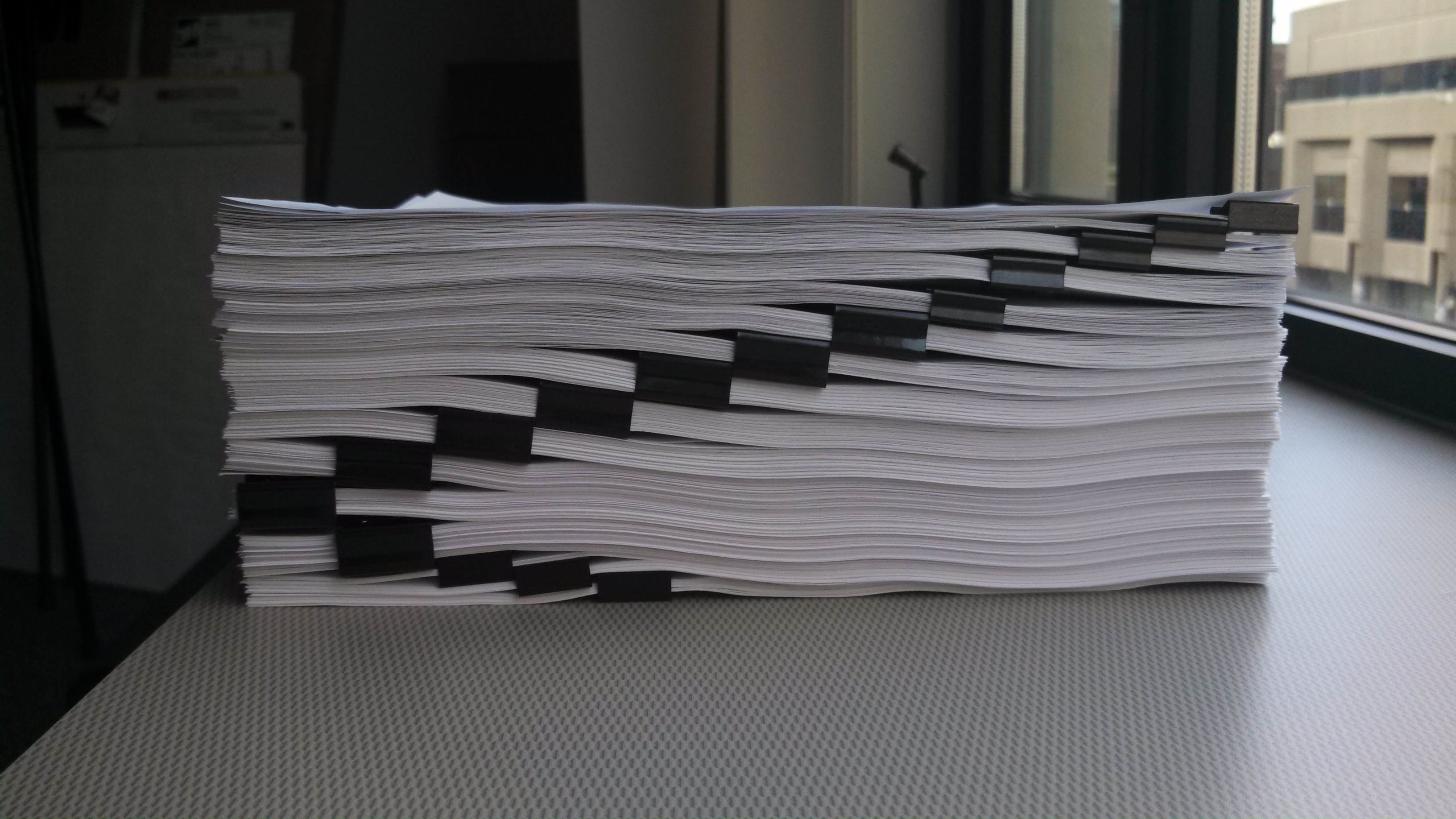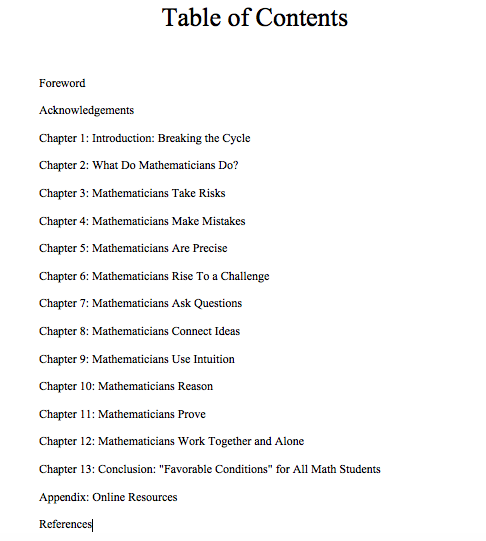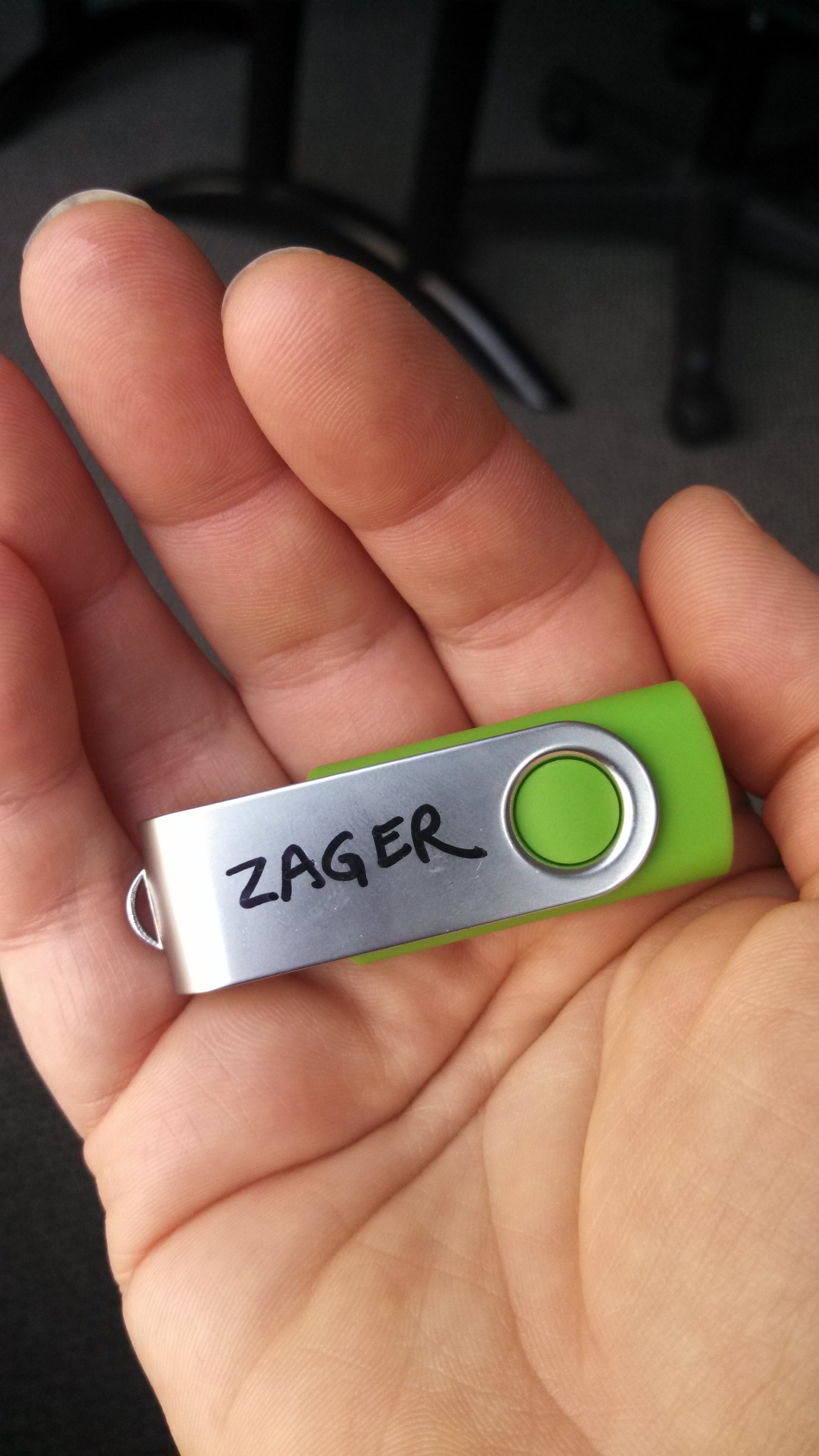NOTE, 3/7/2019. A few days after posting this blogpost, I learned some more backstory about what was going on in the pictures by talking with the teachers. I’m updating it now. An earlier version wasn’t quite right. My apologies.
—
I spend a lot of time working with adults on how we can create conditions for students to experience authentic, satisfying, challenging mathematics. We build norms. We watch videos. We learn discourse techniques. We create community and normalize risk taking and in-process thinking. We talk a ton about task design and problem selection. We work on facilitation moves. We debrief. We plan and teach together, take teacher time outs and discuss, teach some more, and then debrief again. All helpful.
But I’m convinced that the most powerful tool I have is engaging teachers in real mathematics for themselves. Giving educators anchor experiences so they know, viscerally, what it feels like to be confused, and stuck, and have insights, and get a little unstuck, and then wait a minute that won’t work, and then Oh wait! I see it! and then CELEBRATION!, which should be followed fairly quickly by getting stuck all over again, either by riffing off that problem or choosing a new one.
Because once we get it–once we know what the story arc of doing mathematics feels like–we want our students to have that experience for themselves. And also, for teachers who have never been given opportunities to muddle through and make sense and figure it out and OWN IT, having that experience for the first time can be life-changing and empowering. That’s not hyperbole, I swear.
So, when I design professional learning for a group of adults, one of my hopes is to create those individual moments for as many teachers as possible. And yesterday in Houston, I was lucky enough to catch one on camera.
This group was about 35-minutes into the problem. I’d stopped by several times and could tell that Kori and Patti work together closely and have shared trust. I’d watched them go back and forth, exchanging ideas, talking it through, using rough-draft thinking. Sometimes they put their heads together, and sometimes they worked on their own, organically flowing between the two.
At this point, Kori (standing) had solved it, she thought, but she wasn’t convinced. She had presented her thinking to her group, but was looking for validation to make sure her answer made sense.
Patti (seated) was still in the midst of solving, after taking a totally different approach. I love Kori’s furrowed brow here, as she listened intently to Patti, who was explaining her thinking and working out the end of her solution, live.
And then? The moment of insight! Kori saw that Patti’s work and her own approach came from different angles, but were converging on a common solution, which meant they were probably on the right track. Kori’s mind and body moved so fast I couldn’t get her in focus.
And then the shared celebration and pride began.
I mean, that’s it. That’s what I want for students and teachers. That’s what math class should feel like.
P.S. Thank you to Kori and Patti for your brave mathematical work, and for allowing me to share your story. Thank you for clarifying details via email. And thank you to Sharon for making it all happen.






